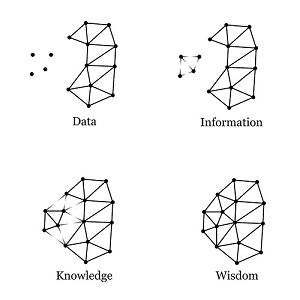Klint Finley
Latest from Klint Finley
What DevOps Can Learn From Product Development
Today at DevOps Days Austin, Dell corporate strategist Michael Cote gave a presentation on what DevOps teams can learn from product development. You can find his slides here, but I’m going to try to summarize and synthesize his presentation as best I can. Cote is basing the presentation on work done by the Crowbar team ...
Video Stream: Watch DevOps Days Austin Live
DevOps Days Austin is today. So far we’ve seen presentations from DevOps guru John Willis and we expect to see much more. Check out the video stream below if you’re not in Austin, and stay tuned for more coverage. Update: The event is over, but you can find video footage here. You can also check ...
Video: Kanban and DevOps Roundtable
I mentioned the Kanban for workshop last week. If you couldn’t make it, check out this video debriefing on Kanban. It’s not a replacement for the workshop, but it gives some insight into Kanban and why it works for some organizations. On the round table are: Damon Edwards (DTO Solutions) Luke Kanies (Puppet Labs) John ...
3 Ways APIs are Changing IT Consulting
In a time when entrepreneurs and VCs are the new rock stars, cloud computing, big data and consumerization have made even enterprise startups like Box, Cloudera and Yammer sexy. And now thanks to EMC’s acquisition of Pivotal Labs and a massive new round of funding for Appirio, even consulting startups are starting to see some ...
NoOps, AppOps and DevOps and your Business. How do They Apply for You?
[The following is a guest post by New Relic Lead Developer of Cloud Services Adron Hall- KF] Before diving straight into what NoOps, AppOps, and DevOps are let’s first give platform-as-a-service (PaaS) some context. There are three general delineations that are commonly used in application hosting today: SaaS, PaaS and IaaS. Generally these acronyms are ...
Atlassian Unveils New Version of Continuous Integration Tool Bamboo
Today Atlassian unveiled the new version of Bamboo, a continuous integration and release management tool. Most notably, version 4 brings better support for distributed version control systems like Git and Mercurial through automated plan branches. It also adds a test quarantine feature and makes a few user interface improvements. “We thought we did a good ...
What’s Next for Linux as Red Hat Passes the $1 Billion Mark?
Today Red Hat announced that it has become the first $1 billion open source company. Although it’s long been known that Red Hat would hit this milestone soon, it’s a major achievement in the history of Linux and open source. But it also raises the question of what’s next for the little open source kernel ...
Puppet Enterprise Adds Support for Windows and More
Today Puppet Labs announced version 2.5 of the configuration automation suite Puppet Enterprise. The new version adds support for Windows, integration with the Puppet Forge Marketplace and more insights into infrastructural changes. Windows support was added to the open source version of Puppet with version 2.7.6. “Puppet for Windows is one of the top search ...
Data-as-a-Service: When Cloud and Big Data Converge (Trends 2012)
Data-as-a-service will be the ultimate convergence between cloud computing and big data. Not to be confused with database-as-a-service (though hosted databases will be a part of data-as-a-service), I see data-as-a-service as consisting of three components: 1) APIs that deliver data via an API to third parties, such as the Klout API. 2) Markets that sell ...
Next Generation Monitoring Solution Boundary Hits General Availability
Today, Boundary announced the long awaited general availability of its application monitoring solution for big data architectures. Boundary uses network data to determine the health of applications and is delivered as a software-as-a-service. Boundary’s service has been in beta since last year, during which time the company received over 1,000 requests to join. It’s currently in ...
















